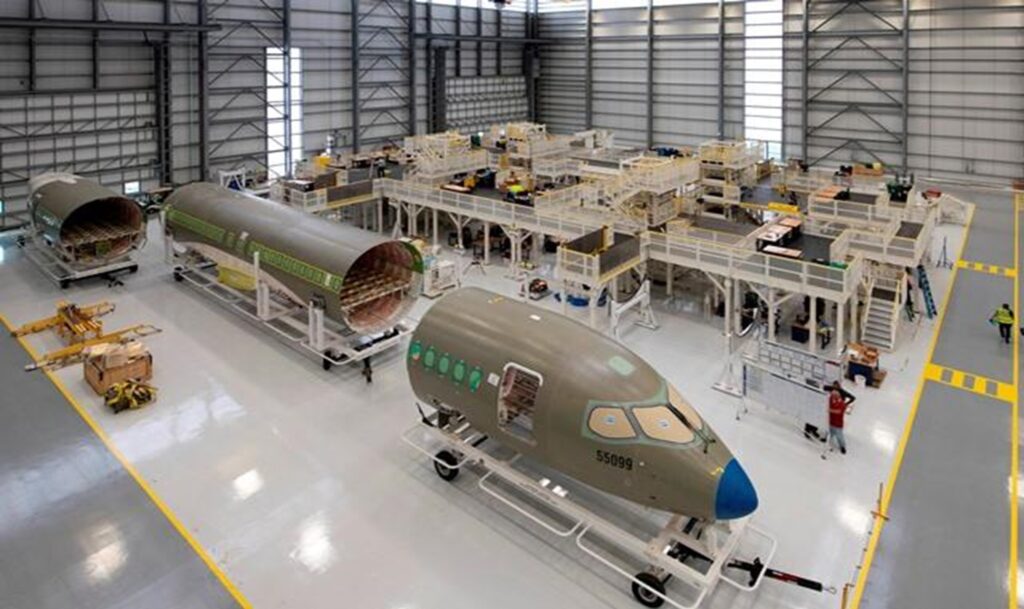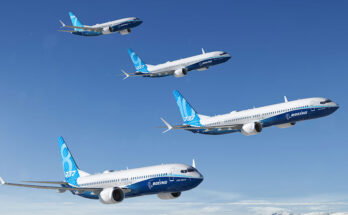
Tariffs and the Aerospace Supply Chain
The aerospace sector is particularly vulnerable to trade restrictions due to its deep integration of a complex global supply chain. Major manufacturers like Boeing and Airbus depend heavily on imported materials and components, many of which are subject to the tariffs introduced most recently. For instance, tariffs on aluminum and steel will result in a marked increase in the cost of these critical raw materials, which will lead to inflated aircraft production costs and prices. These rising costs will reverberate through the entire supply chain, from tier-three and four suppliers to the Major OEMs, exacerbating an already fragile post-pandemic manufacturing environment. Many suppliers are still struggling to return to pre-COVID-19 production levels, and the added financial and logistical strain from tariffs only further complicates recovery efforts. In addition to increased costs, the tariffs are likely to disrupt global procurement strategies. Manufacturers now face the dual challenge of managing more complex sourcing processes while maintaining competitive pricing, which will force them to reassess long-standing supplier relationships.
Calls for domestic sourcing in the U.S. as a workaround to these trade restrictions may sound appealing in theory but come with several practical challenges. A cautionary example can be found in Russia’s efforts to localize aerospace manufacturing in the wake of international sanctions following its invasion of Ukraine. Facing the loss of access to Western components, Russia has attempted to substitute foreign systems with domestically produced alternatives in key commercial programs like the Sukhoi Superjet 100 and the Yakovlev MC-21. However, these efforts have been marred by significant delays and performance trade-offs. The Superjet program, intended to replace imported components with Russian-made parts, has experienced repeated schedule slippages and technical hurdles, particularly in replacing engines and avionics. Likewise, the MC-21, which was originally slated to feature U.S.-made Pratt & Whitney PW1400G engines and foreign composite materials, has struggled to stay on track as engineers scrambled to integrate the Russian-built PD-14 engine and locally produced wing components.
These setbacks illustrate the difficulty of replicating global aerospace-grade supply chains under tight deadlines and economic pressure. The Russian case shows the immense complexity, cost, and time required to create a self-sufficient aerospace manufacturing base, particularly when replacing highly specialized systems. For the United States, rapidly shifting aerospace production onshore to avoid tariffs would likely face similar obstacles, making it an unrealistic short-term solution. While difficult to achieve in the long term, it is still possible, though it would be inefficient and come with substantial burdens and logistical complexities, as evidenced by the experience of Russia.
Impact on Air Travel and Operators
Although the original intent of these tariffs is to address trade imbalances and support U.S. manufacturing jobs, they are likely to have unintended consequences on commercial aviation beyond manufacturing and the supply chain. For example, airlines have already begun reporting a decline in demand due to the tariffs and the resulting economic uncertainty. Several major U.S. carriers have revised their revenue and profit forecasts downward, with Delta Air Lines even announcing a reduction in planned capacity growth, which had previously been forecast to grow at 3 to 4 percent for the year.
Fleet expansion and modernization plans are also being reconsidered, as rising costs and reduced demand could push airlines toward a more conservative approach to capital investment. U.S. carriers may delay or reject deliveries from Airbus’s European facilities in Hamburg or Toulouse until the scope of the tariffs becomes clearer. Instead, they might prioritize deliveries from the Mobile, Alabama facility, where the A220 and A320neo Family are produced domestically. This could apply to major carriers like American, United, and Delta, potentially leading to delays in fleet expansion and modernization as airlines await clarity on the tariff situation. Additionally, international carriers may be forced to adjust routes and market presence, particularly in regions most affected by the tariffs, which could slow global air travel growth and dampen demand for new aircraft.
The increased cost of new and used aircraft and spare parts will also significantly increase operational expenses for airlines. While these costs would typically be passed on to passengers through higher ticket prices, weakening demand could erode airlines’ pricing power and make this unattainable. This dynamic also creates a challenging feedback loop, where increased costs force prices upward, but higher prices suppress demand, ultimately impacting airline profitability and limiting growth potential.
Beyond short-term volatility, the long-term effects of these trade policies could also reshape the commercial aerospace landscape. Slower economic growth directly impacts demand for both passenger and freight air transport, and the resulting decline in discretionary air travel could hinder industry growth over time. Taken together, these factors indicate a turbulent road ahead for the commercial aerospace sector. Ultimately, tariffs will do more harm than good to commercial aviation by disrupting supply chains, driving up costs, and stifling overall industry growth.
With diverse experience in the commercial aviation industry, Grant joins Forecast International as the Lead Analyst for Commercial Aerospace. He began his career at the Boeing Company, where he worked as a geospatial analyst, designing and building aeronautical navigation charts for Department of Defense flight operations.
Grant then joined a boutique global aviation consulting firm that focused on the aviation finance and leasing industry. In this role he conducted valuations and market analysis of commercial aircraft and engines for banks, private equity firms, lessors and airlines for the purposes of trading, collateralizing and securitizing commercial aviation assets.
Grant has a deep passion for the aviation industry and is also a pilot. He holds his Commercial Pilots License and Instrument Rating in addition to being a FAA Certified Flight Instructor.




